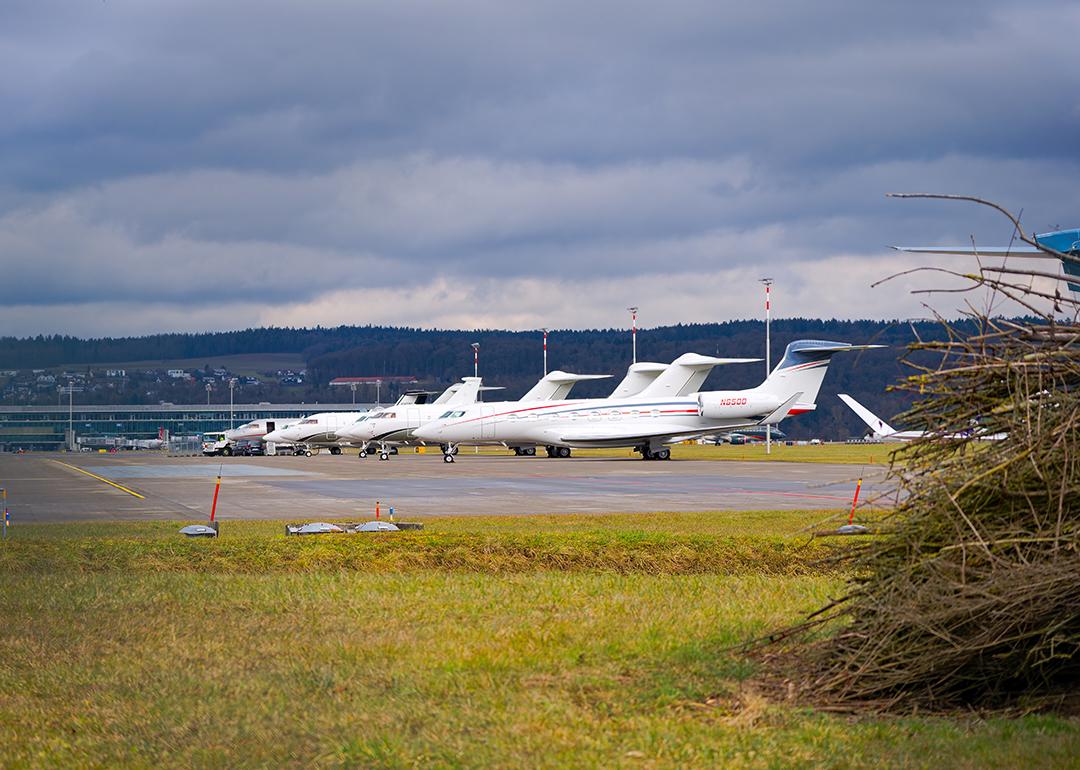
Private jet bookings increased during the government shutdown as commercial flights were cut back
Private jet bookings increased during the government shutdown as commercial flights were cut back
The recent U.S. government shutdown left tens of thousands of planes grounded and travelers scrambling to find last-minute solutions to reach their destinations. Some chose other modes of transportation, such as trains and cars, while the ones who could afford it splurged on private flights.
The reason this was possible has to do with a Federal Aviation Administration (FAA) emergency order that required commercial operators to cut flights until the situation is resolved. This move was necessary due to a severe shortage of air traffic controllers and other essential personnel at 40 of the country's biggest airports.
Since private operators typically do not use major airports, they were not as affected. As a result, demand for chartered flights surged.
In this article, Jettly examines how the government shutdown impacted the commercial air travel system and how private aviation was not as affected.
The Fragility of Commercial Air Travel
The U.S. commercial flight sector was already understaffed, and the recent government shutdown made things significantly worse. It made it clear that, no matter how big, an airport can’t function without proper funding and staff.
Essential workers, such as air traffic controllers, were mandated to come to work even if they didn’t get paid. However, FAA Administrator Bryan Bedford told journalists that between 20% and 40% of the controllers did not show up for work during this period.
This left key airport facilities critically understaffed, leading to mass delays and flight cancellations that rippled across the National Airspace System (NAS). But travelers and airport workers were not the only ones affected.
Air cargo operations were also disrupted, affecting high-value, time-sensitive goods like electronics and pharmaceuticals. Even after the shutdown ended, experts predict the system will take weeks to stabilize. Planes, pilots, and crews are still out of position, and the underlying ATC shortage remains a major, persistent issue.
At the end of the day, the shutdown showed that the commercial air travel industry's reliability and safety standards are directly tied to the consistent, paid labor of its federal workforce and that years of unaddressed staffing shortages can turn a political impasse into a functional and safety crisis for millions of travelers.
Is Private Aviation the Answer?
Private jet rental remains a niche service, catering to only a fraction of travelers. During the latest government shutdown, private jet rental companies did register a surge in demand, but this trend is unsustainable in the long term.
Private jet companies operate within the NAS and rely on the FAA ATCs for safe guidance. As long as the staff shortage problem persists, both sectors will suffer.
Some discussions proposed privatizing the ATC. However, experts and industry groups, citing international examples, such as Canada, have argued that privatization can lead to underinvestment in personnel and infrastructure, thereby containing costs but potentially worsening the controller shortage and safety concerns.
Then there’s the capacity issue. Private aviation cannot absorb the demands of commercial travelers. Even if every private jet in the country flew at full capacity, they could not absorb the millions of passengers who were delayed or canceled during the shutdown.
The Private and Public Sectors are Both Important
Both sectors need to work together for safety, national connectivity, and economic vitality.
The public sector (government agencies such as the FAA, TSA, and state/local airport authorities) serves most travelers and provides the framework for safety, security, and infrastructure that private aviation also uses.
Private jets can use smaller regional airports that commercial airlines cannot serve, so passengers often land much closer to their final destination, significantly reducing ground travel time.
Finding the Balance
If the shutdown highlighted anything, it’s that ongoing staffing challenges in air traffic control affect both commercial and private aviation operators nationwide.
This story was produced by Jettly and reviewed and distributed by Stacker.



